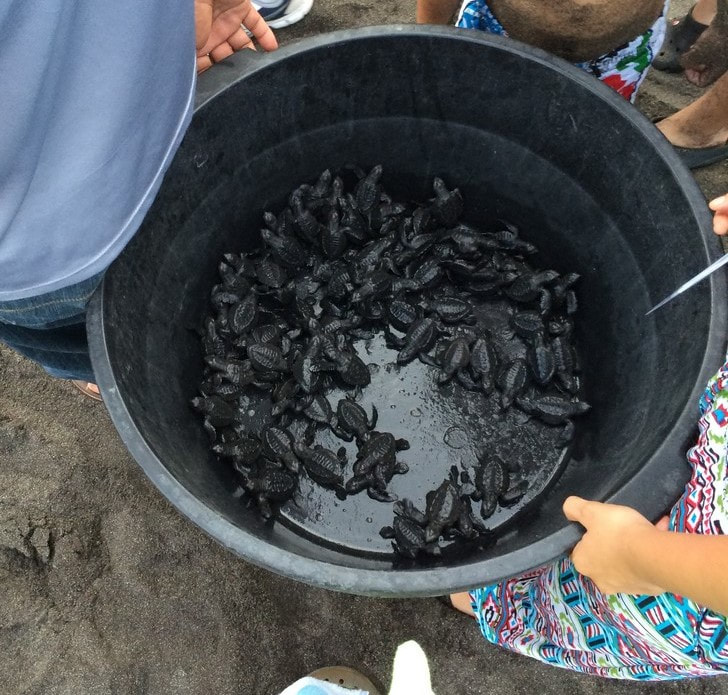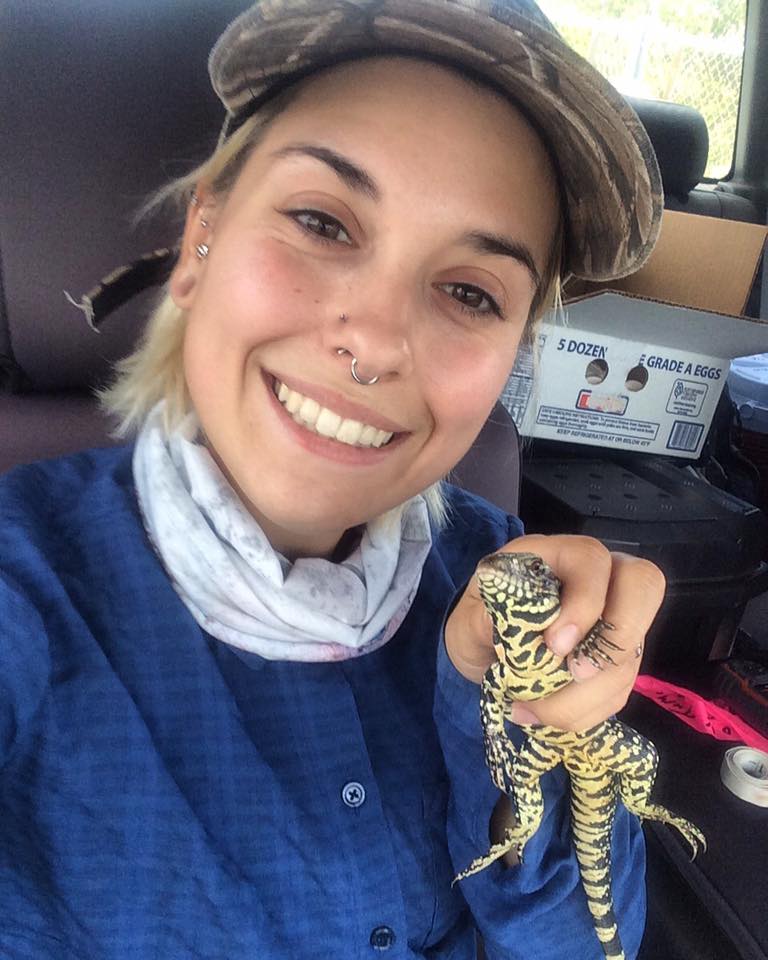|
Some of the most charismatic reptiles come packaged in shells. Turtles of all shapes and sizes capture the hearts of people all over the world. Turtle (and tortoise!) species all over the world hold many traits in common:
This is a grim outlook fr turtles, but all hope is not lost. Citizens and biologists have been teaming up all over the world to protect turtles and their nests. Turtles all over the world are being surveyed for science - citizens and biologists are walking the beaches and waterways to monitor the nesting activities of all kinds of turtles. Sea turtles, river turtles, tortoises are all having their nesting behavior documented, their nests protected, and their hatchlings escorted to the water.
Image above: Leatherback Sea Turtles being gathered by volunteers before being released into the water. http://www.sunglassesrequired.com/blog/2015/3/25/sea-turtles
These simple beach walks can be supplemented by nest protection, usually in the form of caging. Structures such as milk crates of wire metal cages can be carefully placed around the eggs to keep predators from digging up the eggs. It is very important that this light caging does not block the sun, which could cause the eggs in the nests to respond unnaturally - temperature determines the sex ratio or males to females in most turtle eggs, so it is important to not disturb this. Even without cages to protect the nests directly, beach walks can be used to assist hatchlings on their way to the water. The video below shows baby Leatherback Sea turtles (those pictured in the image above!) who were assisted down the beach to the water edge.
This simple conservation method is used all over the world. Costa Rica, Mexico, Panama, Sri Lanka, Cuba, Australia, and all along the coasts of the United States sea turtle nests are being protected. Beyond sea turtles, there are turtles like Maryland's own Diamondback Terrapin, who are subjected to nest surveys and hatchling assistance. One such event I participated in for three years were the nest surveys of Diamondback Terrapins. I was a volunteer for Maryland Department of Natural Resources who walked a two mile stretch of beach. I would look for turtle crawls along the beach, cage the nests using milk crates, and after 60 days the nests would hatch and I would measure and then release the turtles.
The purpose of this was to increase nest hatching for the terrapins, and hopefully increase population numbers. This return investment - having turtle population increase - is something I likely won't be able to see for many years. The long lives of turtles mean that often times no changes are noticed in the population util many years later, when hatchlings grow to be adults. Although the result are not immediate, in areas where depredation of nests are 100% simply having nests hatch is a huge success. The Northern Map turtles that I worked with went from 100% nest depredation to 80% nest success with caging. The reward of simply having nests hatch was amazing.
This simple concept of a walk on the beach emphasizes the idea that conservation of wildlife can be so simple. Above is a video of a conservationist I have had the opportunity to work with explaining why conservation is so simple.
“Never doubt that a small group of thoughtful, committed people can change the world. Indeed, it is the only thing that ever has.” – Margaret Mead. Turtle walks are organized all over - the links below can be used to learn more about turtle walks! Wildlife Act Turtle Foundation We Are Bamboo NSB Below are photos from my experience volunteering with Diamondback Terrapin nesting surveys!
0 Comments
Leave a Reply. |
About the blogFerrets and Friends, LLC has four writers bringing you information on a variety of topics from pets to wildlife, education to conservation, and from new developments in our business to information about our industry. Learn something new each week! Archives
August 2020
Categories
All
|


 RSS Feed
RSS Feed